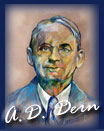NEWS RELEASE – September 23, 2005
Tests of Seat/Head Restraints in Minivans
Fords Are Only Models To Earn Top Rating; Most Seat/Head Restaints Provide Inadequate Protection Against Neck Injuries in Rear Crashes
ARLINGTON, VA — Seat/head restraint combinations in the Ford Freestar and its twin Mercury Monterey earn good overall ratings. Those in some Dodge Grand Caravan/Chrysler Town & Country models are rated acceptable, based on recent evaluations by the Insurance Institute for Highway Safety. However, the seat/head restraints in most current minivan models are marginal or poor, indicating they wouldn't provide adequate protection from whiplash injuries for many people in rear-end collisions.
The ratings are for seat/head restraint designs available in 14 current minivan models. Starting points for the ratings are measurements of head restraint geometry — the height of a restraint and its horizontal distance behind the back of the head of an average-size man. Seats with good or acceptable restraint geometry then are tested dynamically using a dummy that measures forces on the neck. This test simulates a collision in which a stationary vehicle is struck in the rear at 20 mph. Seats without good or acceptable geometry are rated poor overall because they cannot be positioned to protect many people.
Among the seat/head restraints that were tested dynamically, those in the Honda Odyssey are rated marginal overall. All seats in the Chevrolet Uplander (also sold as Buick Terazza, Pontiac Montana SV6, and Saturn Relay) and some in the Grand Caravan/Town & Country and Toyota Sienna are rated poor. These ratings are in addition to the good overall rating for the seats in the Freestar/Monterey and the acceptable rating for the seats in some Grand Caravan/Town & Country models. All of these seat/head restraint combinations earn overall ratings based on both geometry and dynamic test results.
Another minivan, the Kia Sedona, has been redesigned for the 2006 model year but isn't yet available. Results for the Sedona will be released early next year.
"Automakers are improving the geometry of their head restraints, compared with the last time we evaluated them," says Institute chief operating officer Adrian Lund. "Still, in this group of minivans the Fords are the only models with good dynamic performance for all of their seat designs. Many of the seat/head restraints we evaluated didn't even get to the testing stage because of marginal or poor geometry. These cannot begin to protect most people in rear-end crashes."
Some seats automatically earn poor ratings: The Institute doesn't test seats with head restraints that are rated marginal or poor for geometry because such seats cannot be positioned to protect many taller people. The seats that weren't tested in this group include all of those in the Chevrolet Astro, GMC Safari, Mazda MPV, and Nissan Quest plus some seats in the Grand Caravan and Toyota Sienna.
Neck injuries are the most common kind reported in automobile crashes and are most likely to occur in rear impacts. Whiplash is the most serious injury reported in about 2 million insurance claims each year, which cost at least $8.5 billion. Such injuries aren't life-threatening, but they can be painful and debilitating.
Rear-end crashes are common events in urban and suburban traffic. For example, in one urban Virginia county 63 percent of daytime crashes on urban interstate highways in 2003 were rear impacts.
When a vehicle is struck in the rear and driven forward, the vehicle seats accelerate occupants' torsos forward. Unsupported, their heads will lag behind the forward movement of their torsos. This differential motion causes the neck to bend back and stretch. The higher the torso acceleration the more sudden the motion, the higher the forces on the neck, and the more likely a neck injury is to occur.
A head restraint should extend at least as high as the top of the ears of the tallest expected occupant. A restraint also should be positioned close to the back of an occupant's head so it can contact the head and support it early in a rear-end crash.
As Published in the IBA WEST Weekly Insider – Sept 23, 2005
This news release is brought to you by the commitment and assurance of the A.D. Dern Insurance Agency, Inc., keeping you up to date and aware of the ever changing California Insurance market place. Continue to check back with us for other insurance articles of interest.
Our Family Agency has been serving the Community's Insurance needs since 1928!





